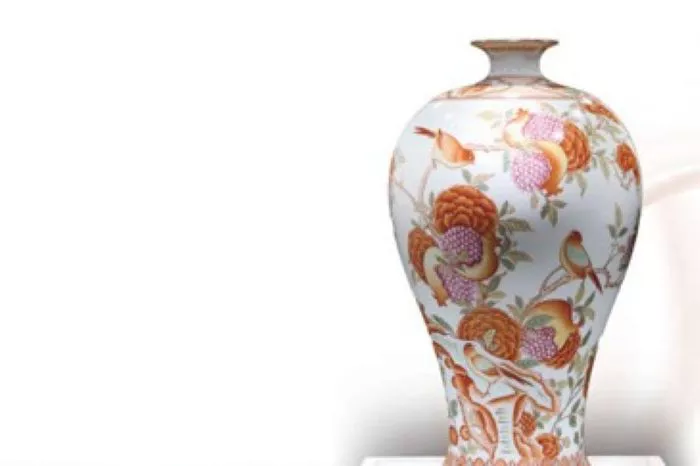The Banyi Kiln ruins in Changzhi’s Shangdang District represent one of China’s earliest production sites for distinctive red-and-green porcelain. Archaeological evidence confirms this Shanxi facility operated as the region’s largest ceramic center during the Song Dynasty over a millennium ago. Recognized as a national intangible cultural heritage in 2021, the traditional firing techniques now thrive anew at the Honglücai Village Museum, showcasing both historical treasures and modern interpretations.
Rainbow on ceramics
Visitors encounter vibrant displays where ruby reds contrast with jade greens across 600 historical pieces – from floral-painted bowls to the museum’s prized tiger-shaped pillow. “The technique of outlining in red and filling with green created China’s first colorful ceramics,” explains Li Yamin, a市级非遗传承人. Her family’s collection demonstrates how artisans combined mineral pigments with white glaze to produce auspicious motifs.
The kiln’s prosperity stemmed from local resources – quality kaolin clay, coal deposits and water sources around Taihang Mountain. Yet the demanding 72-step production process, requiring dual firings for underglaze and overglaze layers, nearly vanished last century. Li Jianping, Yamin’s father, spent years reconstructing lost methods after establishing a cultural company in 2012. “We experimented endlessly just to rediscover the proper slip clay formula,” recalls Yamin.
Tradition meets modernity
Contemporary innovations now complement restored techniques. Collaborations with top art academies have refined material compositions, enabling thinner yet more durable tableware. A signature teacup features improved glazing and intricate depictions of local architecture like the Guanyin Temple’s suspended sculptures. Production has expanded to 300 varieties, blending historical motifs with functional designs.
The museum’s experiential programs attract over 10,000 annual visitors, while new-generation artisans ensure this chromatic legacy continues. As Yamin observes, “When traditional art serves modern life, its vitality endures.” Through technical breakthroughs and cultural tourism, Banyi Kiln’s rainbow-hued ceramics are reclaiming their place in China’s living heritage.
Related Topic:
- Devon and Cornwall Poised for Record-Breaking Tourism Surge in 2025
- CLIA UK & Ireland Reveals Growth, New Training at Annual Conference
- Inauguration of the First China – Central Asia International Cultural and Tourism Train

